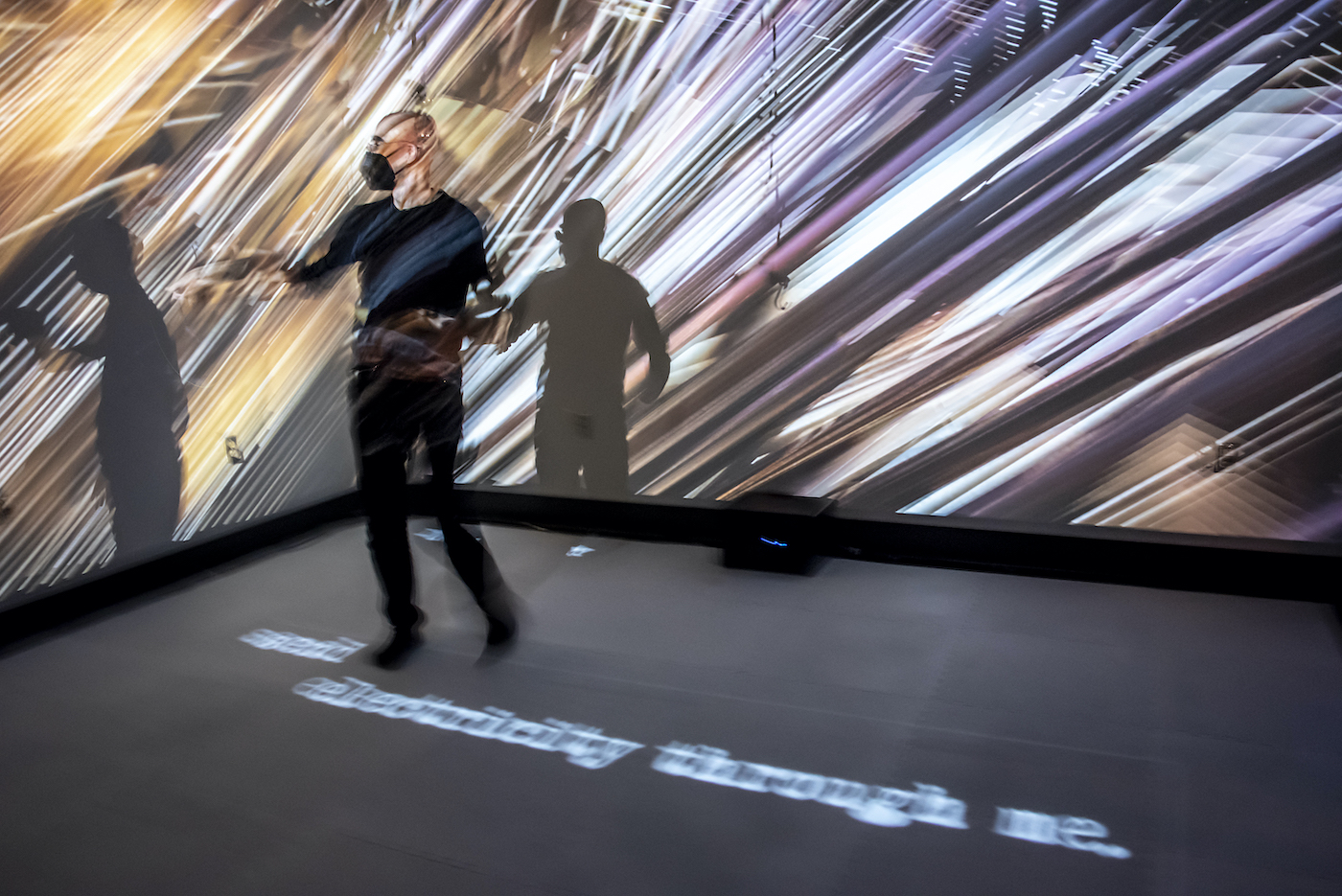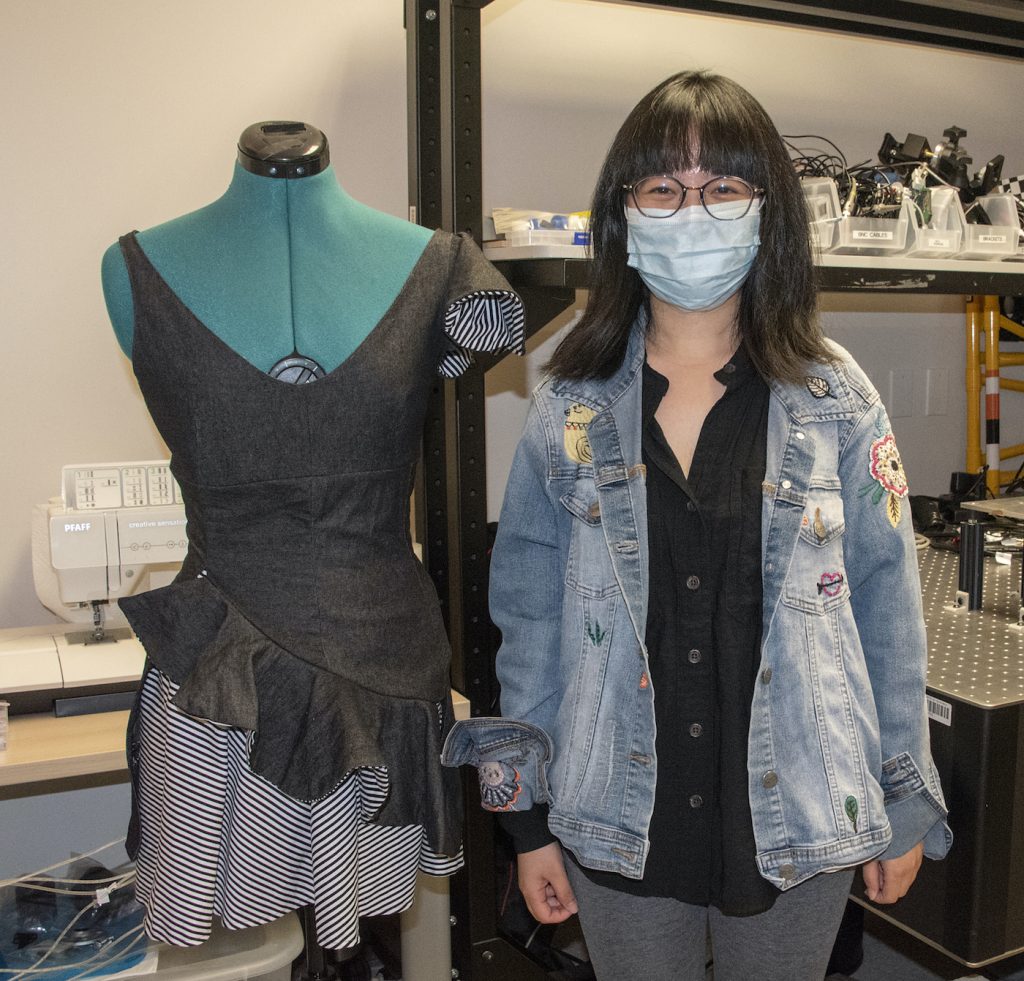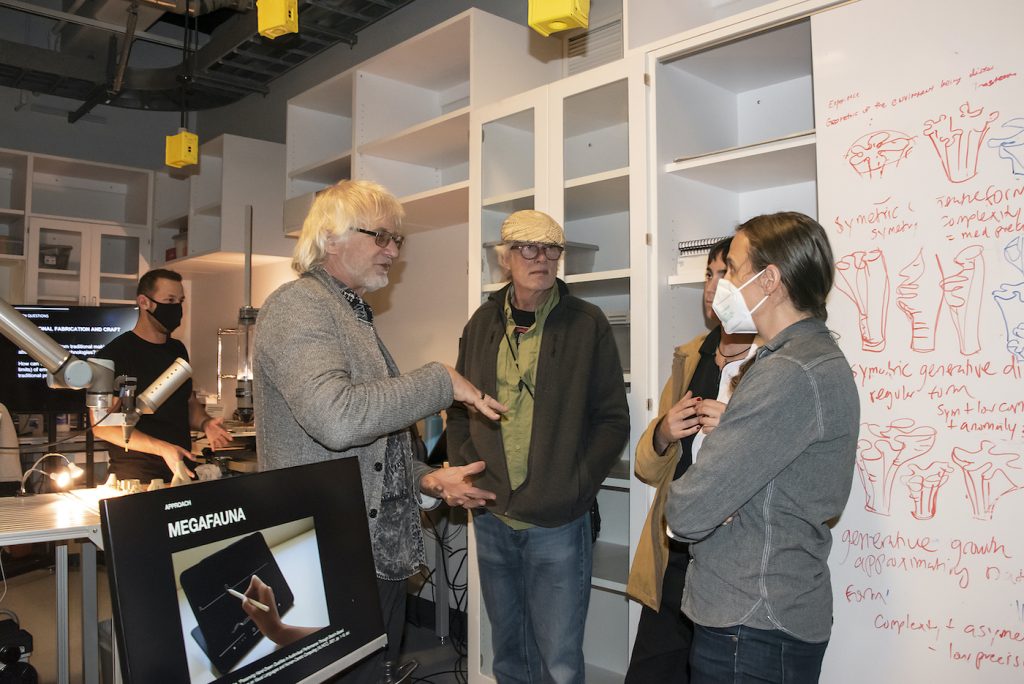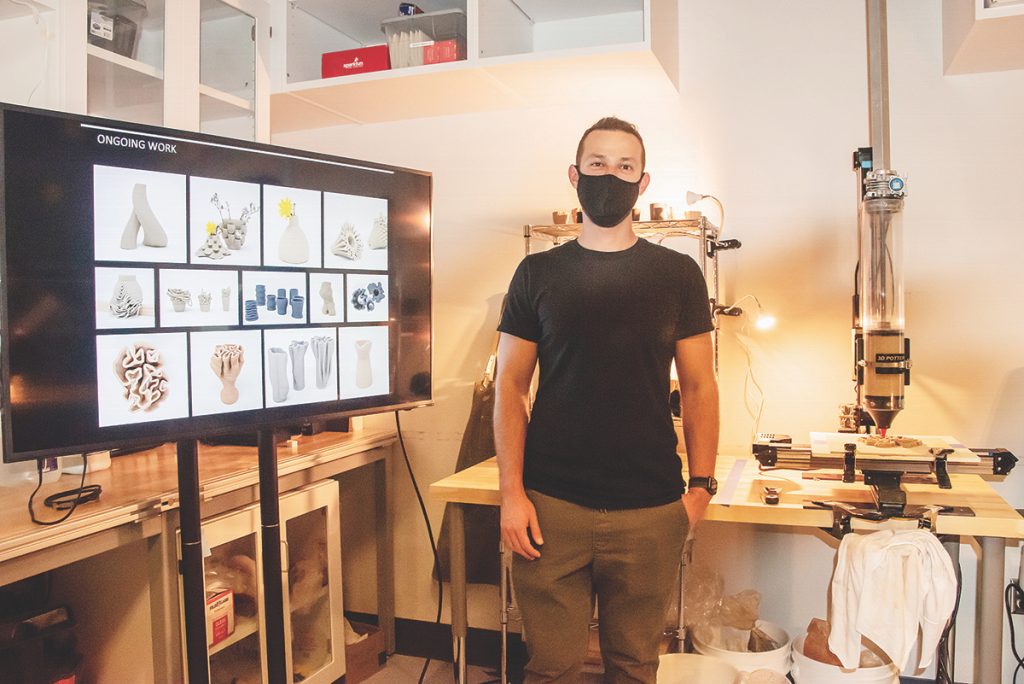Media Arts & Tech Grad Shows on Display May 27 & June 2

Dancing lights, clay formations, and wiggling dresses – just some of the many wonders being worked on at UCSB’s Media Arts & Technology Program (MAT). Attention techies x media artists (and just anyone curious): It is time for the annual MAT Grad shows featuring the latest inventions from their hardworking graduate students.
We recently attended the Open Labs Research Day event to give you a bird’s eye view of what’s happening at their two End of the Year Shows happening this Friday, May 27, from 6 pm to 9 pm at Elings Hall and on Thursday, June 2, at SBCAST. The department has eight research labs: Electronic music and sound design, Interactive art, Visualization, Transarchitectures, Multimedia signal processing, Human-computer interaction, Multimedia systems and Robotics, and then the AlloSphere.

Now if some of those descriptors seem alien to you, it’s all more the reason to come see their work firsthand, where those doing the creating are on site to explain. For those new to the MAT, you are in for a ride into what we like to call the now-future. While some areas seem virtually here already, others are roadmaps to inventions and research.
As we entered, we were met by MAT Chair and awarded Professor Marko Peljhan, a native of Slovenia. No stranger to technology, he is the Co-Director of the University of California system-wide Institute for Research in the Arts since 2009, where he is coordinating the art-science integrative methodologies initiative. He also directs the MAT Systemics Lab in Elings Hall, and with Matthew Biederman coordinates the Arctic Perspective Initiative, an art-science-tactical media project focused on the global significance of the Arctic geopolitical, natural, and cultural spheres.
As we explored, Nefeli Manoudaki, who is working on an aromatic VR experience called AlloPlex:HYDNUM, at SBCAST with Iason Paterakis, Pau Rosello, Diarmid Flatley, alongside BIOPAC and Alan Macy, guided us through the intricate spaces to meet students and see their work. Our first stop was the transLAB, founded and directed by Professor Marcos Novak,PhD, a pioneer in virtual architecture. The lab’s research mission is to “…investigate how technology alters the relation between actual, transactivated, and virtual space in art and science. Affiliated with the AlloSphere (named by Novak and housed at Elings Hall), the transLAB consciously seeks not to represent what we already know but to invent what we do not yet know.”
Here we observed two participant projects: the well-known Becoming Light corner wall light wave art installation, and a VR project where one uses a headset and handheld remote to enter a computerized model of a virus. Professor Novak displayed Becoming Light for us, holding a wand device and moving it along his body to create various light wave formations and colors on the wall.
The next open lab was in digital fabrication. We met with Mert Toka and Samuelle Bourgault, PhD candidates, working together to build computational fabrication techniques compatible with traditional craft such as clay. Toka demo’ed the set-up of an interactive drawing system with 2D sketching that stacks upon itself and sends data to a 3D printer using clay. Printing can be done two ways: Print whenever a stroke is completed to learn the system or batch print only selected strokes.


For demo purposes only, the 3D clay printer was on slow-mo. “The printer uses all types of clay, including obsidian, Tuffbuff and SBFG, however the clay needs to be watered down to go through the printer nozzle. Although it looks like the 3D printer is operating on its own, there are certain times during the printing that one needs to do hands-on work with it,” says Toka.
He is releasing two open-source software programs. The back-end program is a general-purpose controller for 3D-printer hot-ends implemented in Python. It listens to some OSC commands to author nozzle movement. This implies a 3D printer can also be used remotely. The second program is the front-end and implemented in Processing. It handles the virtual representation of the printer hardware along with a multi-layered canvas interface and basic interface level features.
Next was the RE Touch Labled by Professor Yon Visell, PhD, since 2015, with his lab’s mission: “We pursue fundamental and applied research on the future of interactive technologies, with emphasis on haptics, robotics, and electronics, including emerging opportunities in human-computer interaction, sensorimotor augmentation, soft robotics, and interaction in virtual reality.” Visell also hosts a radio show on science x music with Irene Moon on KCSB 91.9, Mondays 9 to 10 am. Amazing and very cool indeed.
Here we talked with Mengjia Zhu, a 5th year student with degrees in Material Science, Engineering, and Apparel Design, who is graduating in June and heading to work for Meta (formerly Facebook). Her research focuses on Soft Robotics, Wearables, and Assistive Technologies; her project showed a mannequin whose dress moved by computer control. As she ran different algorithms, the dress dance along the hem, twisting and contriving with the pressure changes in the embedded soft robotics.
There were many marvels on display that night – and this was just the Open Lab. The End of the Year will have a full range of polished pieces to which the MAT students have dedicated their research and hard work. On May 27, visit the UCSB Elings Hall event to dance with light or immerse yourself in the interactive 3D projection space, AlloSphere. The SBCAST event on June 2 will have its own show featuring the esteemed kinetic installation, Song Cycle, and even dazzling displays of projection mapping projects on the exterior of the Bauhaus-style buildings. Over the 20th century, art has grown to be a lot more than just ‘things on walls’ and these students are on the frontier of bringing these art mediums off of our walls and into our daily lives.
411:
Event Info: symades.net
MAT Department: mat.ucsb.edu







